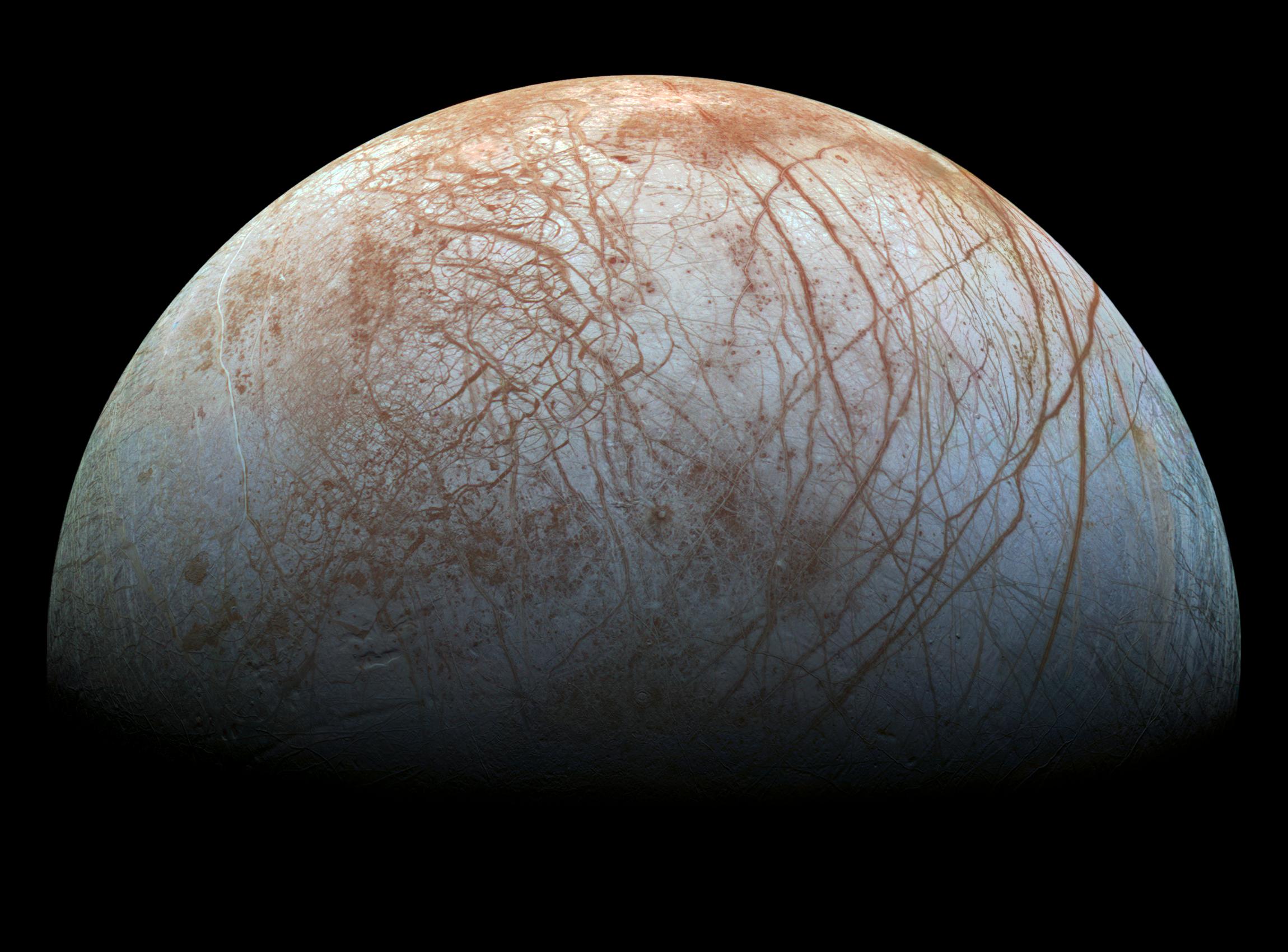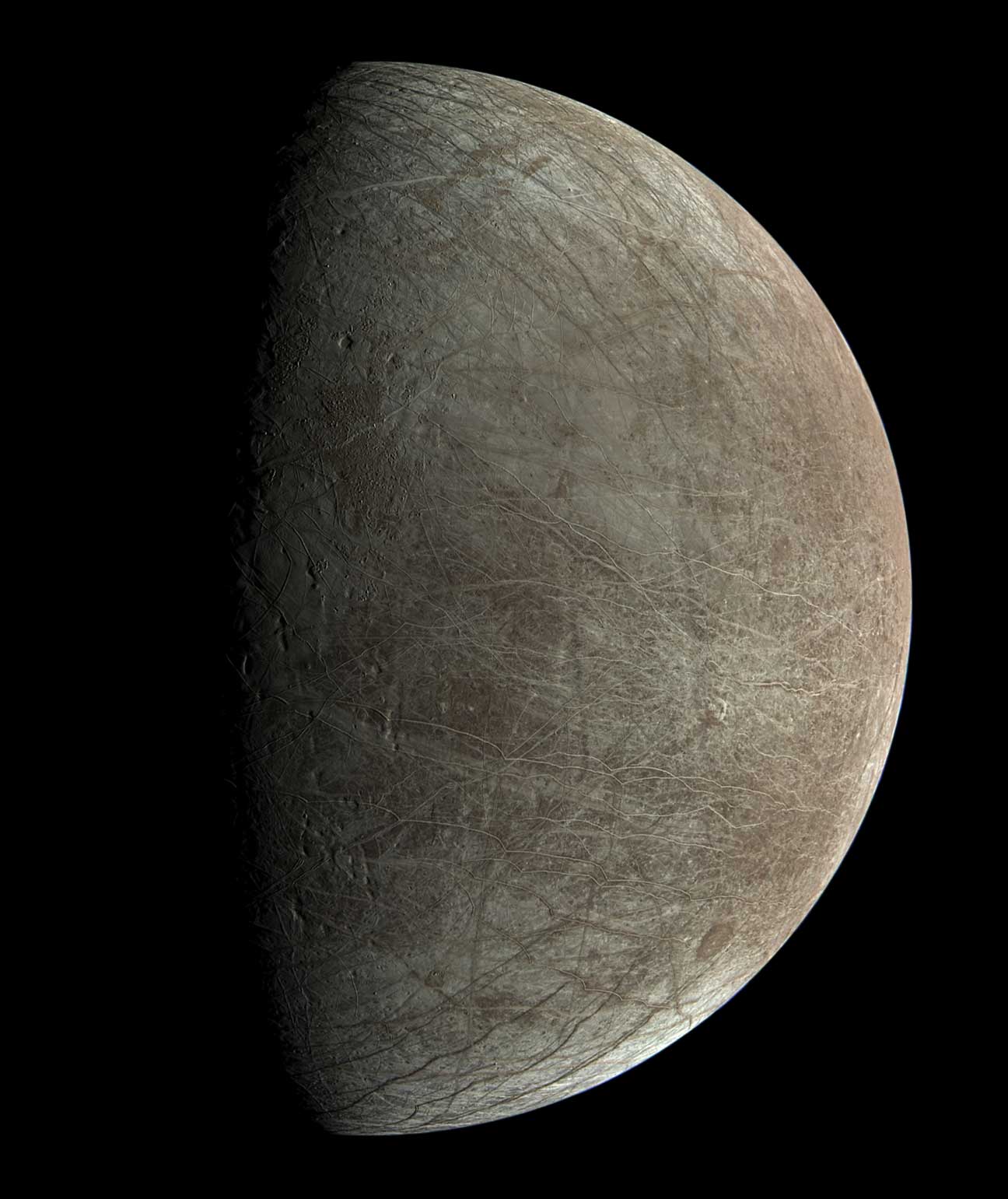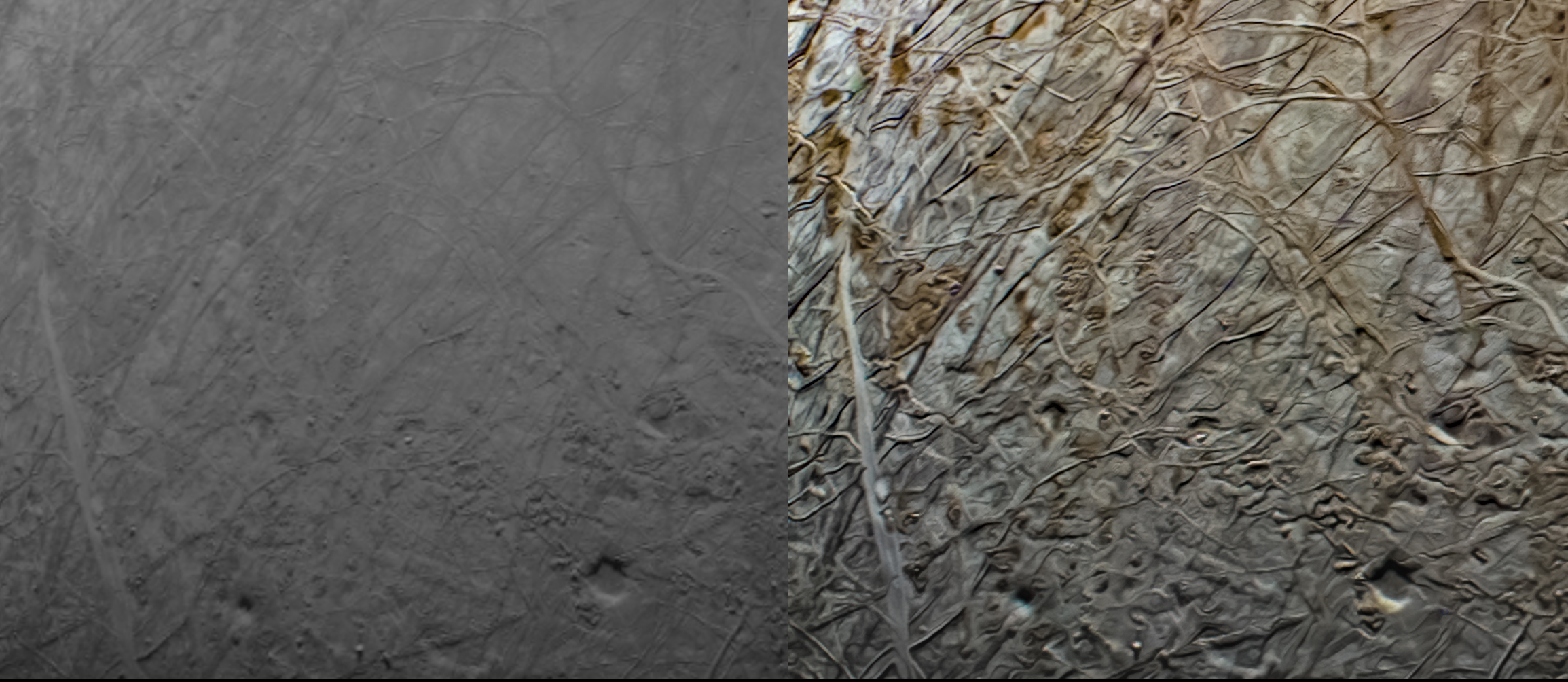Citizen scientists process new JunoCam images of Jupiter’s icy moon and the results are awe-inspiring

Citizen scientists have processed the new JunoCam images of Jupiter's icy moon Europa captured during the Juno mission's close flyby on September 29 and the results are out of this world.
JunoCam took its closest image at an altitude of 945 miles (1,521 kilometers) over a region of the moon called Annwn Region. Citizen scientist Björn Jónsson processed the image to enhance the color and contrast.
The processed images were shared by NASA.

Credit: Image data: NASA/JPL-Caltech/SwRI/MSSS. Image processing by Björn Jónsson CC BY-NC-SA 2.0
In the image at right, processed by citizen scientist Navaneeth Krishnan, the enhanced color contrast causes larger surface features to stand out more than in the lightly processed version of the image (left).
 Credit: Image data: NASA/JPL-Caltech/SwRI/MSSS. Image processing: Navaneeth Krishnan S © CC BY
Credit: Image data: NASA/JPL-Caltech/SwRI/MSSS. Image processing: Navaneeth Krishnan S © CC BY
You can see other processed images here.
"Starting with our flyby of Earth back in 2013, Juno citizen scientists have been invaluable in processing the numerous images we get with Juno. During each flyby of Jupiter, and now its moons, their work provides a perspective that draws upon both science and art. They are a crucial part of our team, leading the way by using our images for new discoveries," said Scott Bolton, Juno principal investigator from the Southwest Research Center in San Antonio.
Europa, the sixth-largest moon in the solar system, is slightly smaller than Earth's moon. Scientists believe that the Jovian moon has a salty ocean below its miles-thick ice shell, sparking questions about potential conditions capable of supporting life.
During the recent flyby, NASA's Juno collected what will be some of the highest-resolution images of the moon, according to the agency. The close approach also marks the second encounter with a Galilean moon during Juno's extended mission. The mission is scheduled to make close flybys of another Jovian moon, Io, the most volcanic body in the solar system, in 2023 and 2024.









